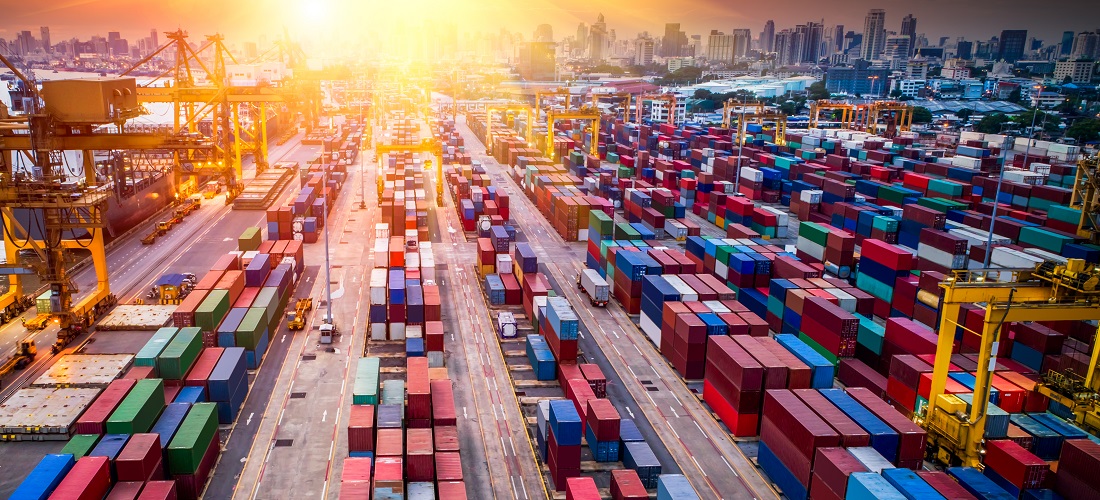
DataLiner: Brazilian containerized imports and exports fall in June year-on-year
Jul, 29, 2022 Posted by Gabriel MalheirosWeek 202230
Recently released data by Datamar regarding the flow of containers in Brazil in June indicate that Brazilian imports and exports fell year-on-year in terms of volume in the sixth month of the year. Such a declining trend was also found among the year-to-date results of the first six months of 2022 compared to the same period of the previous year.
Exports
In June, 224,298 TEUs were exported, a decrease of 3.38% compared to June 2021. Please find the month-to-month comparison below:
Brazilian container exports (month-on-month) | Jan – Jun | 2019 – 2022 | TEUs
Source: DataLiner (click here to request a demo)
In the first six months of 2022, Brazilian containerized exports reached 1,442,477 TEUs, a drop of 2.4% compared to the first half of 2021. See more below:
Brazilian container exports (Year-to-date) | Jan – Jun | 2019 – 2022 | TEUs
Source: DataLiner (click here to request a demo)
According to Datamar’s Business Intelligence team, this drop was not even in all ports. While Paranaguá, for example, exported 21,000 more TEUs in the first half of 2022, the Ports of Rio Grande and Itajaí lost volumes. Itajaí, for instance, exported a 40% lower amount compared to the period from January to June 2021.
Animal protein was the product highlight in exports via containers and, more specifically, chicken meat (+8.4%) to China and the Arab countries and beef (+30.5%) to the United States and China.
Another commodity that saw significant growth in its exports numbers was paper, up 21.5% in the period. On the other hand, cotton exports fell by 22.7% when comparing the number gathered from January to June 2022 and 2021.
Imports
The high dollar-Real exchange rate and the lockdowns at Chinese ports, among other factors, contributed to the drop in Brazilian containerized imports. In June alone, 173,445 TEUs were imported, a decrease of 12.69% compared to June 2021.
Brazilian container imports (month-on-month) | Jan – Jun | 2019 – 2022 | TEUs
Source: DataLiner (click here to request a demo)
Comparing the YTD results of 2022 to the same period of 2021, the drop seen was even greater: -15.1%.
Brazilian container imports (Year-to-date) | Jan – Jun | 2019 – 2022 | TEUs
Source: DataLiner (click here to request a demo)
A study conducted by Datamar’s Business Intelligence team showed that practically all ports had a drop in imported volumes. Santos received 33,135 TEUs less in the first half of 2022 compared to the same period in 2021, a volume 6.2% lower. Navegantes received 31,944 fewer TEUs, down 19.5% in the same comparison period.
As for the most important cargoes imported, what stood out was the decrease in the volume imported of auto parts (-6.6%), plastic (-33.8%), and fertilizers (-31.5%, with nitrogen fertilizers falling 51.06% from January to June 2022 over the same period in 2021. On the other hand, imports of pesticides increased by 72.2% in the same timeframe.
Future perspectives
For the next half of the year, all eyes in the maritime trade international market are turned towards China since, on July 28th, its government admitted that the country will not meet its growth target for the year and signaled that it will maintain the zero-tolerance measures against Covid-19.
Few economists expect China to meet this year’s official target of expanding by 5.5% gross domestic product (GDP), especially after Beijing announced growth of just 0.4% in the second quarter compared with a year earlier.
In addition, according to an analysis by Bradesco’s Department of Economic Research (DEPEC), the perception of stagnation in the global economy persists. For example, the US economy fell by 0.9% in the second quarter, below market expectations and reflecting a loss of momentum in the consumption of goods and investment.
Thus, the IMF cut global economic growth forecasts for 2022 and 2023 while keeping high inflation expectations. Nevertheless, for the time being, the perception of stagnation in the global economic activity should not deter monetary authorities from continuing the cycle of monetary tightening, indicating some tolerance for a possible recessive process in an environment of persistent high inflation, particularly on the part of the United States Federal Reserve.
-
Automotive
Feb, 08, 2023
0
Anfavea defends the end of zero import tax for electrics
-
Ports and Terminals
Dec, 29, 2021
0
Port of Itapoá raises BRL 750 million for expansion project
-
Ports and Terminals
Mar, 22, 2020
0
Brazil`s infrastructure minister rules out closing logistics channels due to coronavirus
-
Meat
Jul, 31, 2023
0
Poultry: challenges and expectations of a new record in exports


